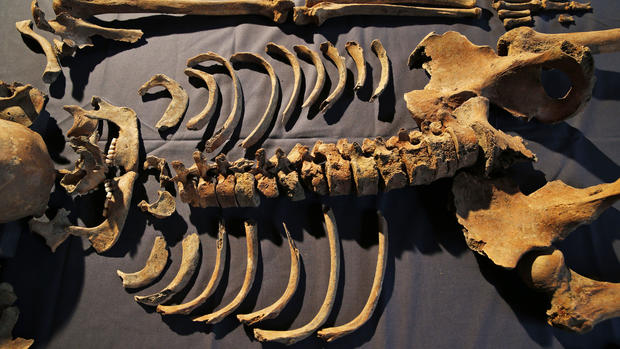Unexpected role of climate in bringing plague to medieval Europe
Bubonic plague, also known as the Black Death, wiped out an estimated 60 percent of the population of Europe after traders coming from Asia inadvertently introduced it in 1347.
Now a study published Monday in the journal Proceedings of the National Academy of Sciences suggests that shifting climate patterns could have played a role in repeatedly reintroducing the lethal plague bacteria Y. pestis during medieval times.The plague, transmitted by infected fleas often carried by rodents, reappeared every few generations until the 19th century and was responsible for killing tens of millions of people.
Comparing the largest dataset of medieval plague outbreaks compiled to date (7711 outbreaks), against 15 tree ring records throughout Europe and Asia, the researchers found 16 instances where climatic changes in Central Asia - warming spring and wetter summers - corresponded with an upsurge in plague in Europe about 15 years later.
Tree rings have long been used as a guide of sorts for correlating climate with historical events and for understanding the fluctuation of temperatures dating back hundreds of years. In the latest study, the researchers found outbreaks of plague from 1346 through 1837 which could be explained by changes in Asian weather.
"Our findings support a scenario where climate fluctuations that positively affect tree-ring growth in the juniper trees in the Karakorum mountain range [in the border region of China, India and Pakistan] also affect climate in a larger region in a way that can promote and synchronize plague outbreaks among the rodent populations of Central Asia," the researches wrote. "When the climate subsequently becomes unfavorable, it facilitates the collapse of plague-infected rodent populations forcing their fleas to find alternative hosts. Such large-scale wildlife plague outbreaks in Asia would, during the time of the second plague pandemic, frequently result in the arrival of plague to Europe harbors."
The lag in transmission for what the scientists called the second plague was due to the fact that increasing presence of the disease had to find its way by way via overland trade routes - possibly via camel caravans - to Russian ports and then on to Europe.
The study also calls into question the long-held belief that the urban black rat served as a reservoir for the plague. Instead, it suggests that that new strains of the disease were repeatedly imported from Asia.
Brendan M. Buckley, a tree ring expert at Columbia University's Lamont-Doherty Earth Observatory who did not take part in the study, called it a "thought-provoking paper, and a very novel and creative use of the available proxy data. "
"The notion of a climate link to how plague persisted (or rather became continuously re-introduced) following major outbreaks in the past is of great importance and opens up a whole new avenue for the study of past outbreaks," he said.
Could the findings also help us better understand the role that climate change is playing in the spread of more modern diseases like malaria and dengue fever? With evidence growing that warmer temperatures are spreading these vector-borne diseases more widely, and the Royal Society just this month dedicating an entire issue to the problem, Buckley said there are lessons to be learned.
"I am not sure what kind of impact this study has on what we do going forward, primarily because we are so much more sophisticated with how we cope with outbreaks than we were in medieval times," he said. "In saying that, however, modes of transportation are so much more immediate in today's world that a heads-up to the kinds of climate scenarios that can enhance the spread of specific diseases may allow us to model global weather and climate to better predict potential outbreaks before they happen."
Though much more rare these days, the plague does continue to sicken people, including isolated cases in the United States. Since 2000, most outbreaks of plague have occurred in Africa, particularly the Democratic Republic of Congo and Madagascar, an island nation off the eastern coast. A new study Monday in the American Journal of Tropical Medicine and Hygiene found that land conversion for crops in East Africa had doubled the numbers of rodents infested with plague-carrying fleas.
"We found that introducing maize production in natural areas appears to create a perfect storm for plague transmission," said Hillary Young, PhD, a community ecologist at the University of California, Santa Barbara, and one of the lead authors of the study done in Tanzania.

